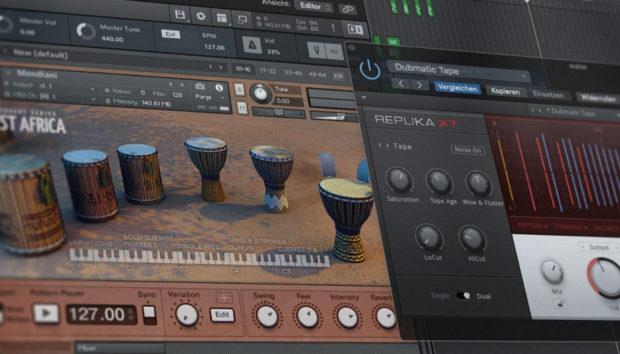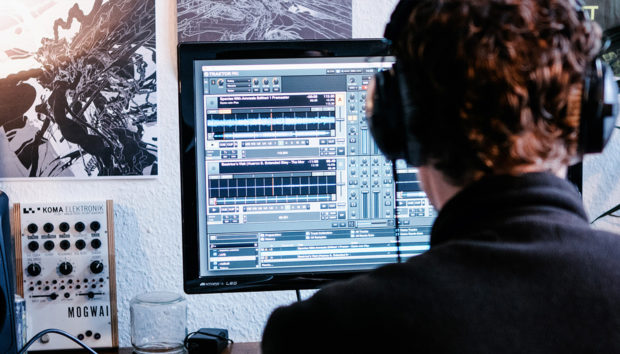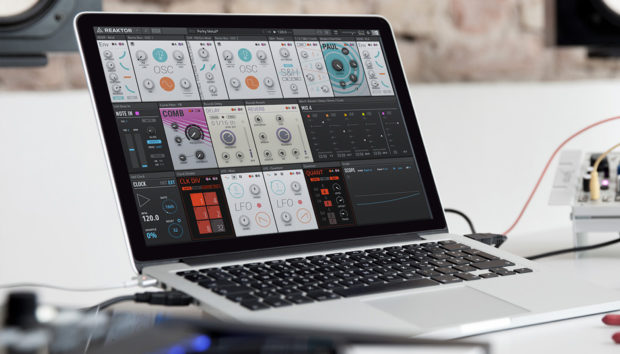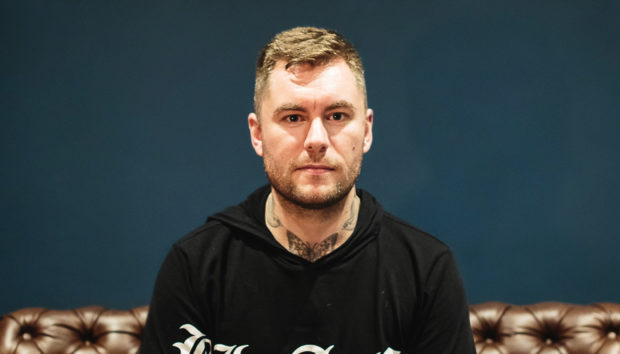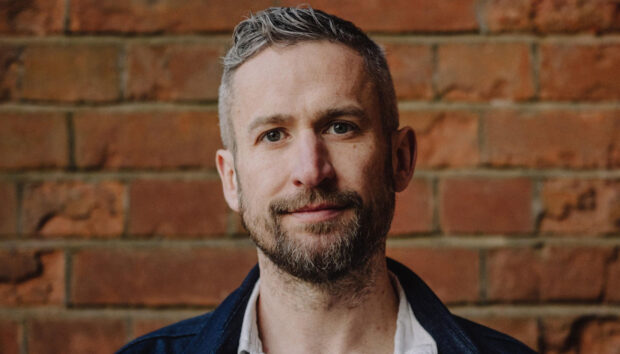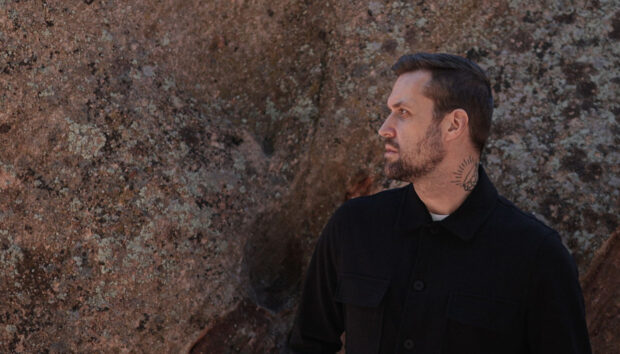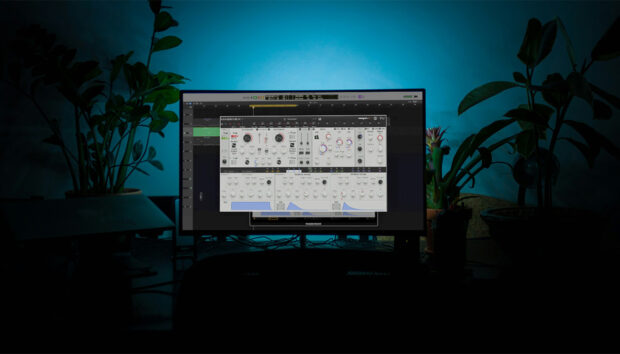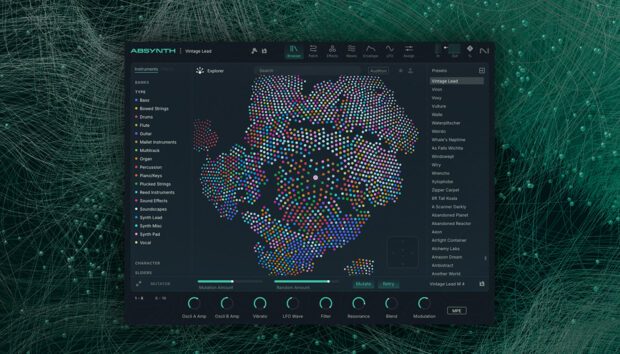French producer Boris Way has carved out a niche for himself in the melodic tech house scene by embracing contrast. His latest single Uber On Call, which is out now via Ultra Records, is a low-end-heavy dancefloor record driven by a sleek groove and a weightless top line. It marks a shift toward a punchier, more refined sound that still allows for emotional expression.
That evolution didn’t happen by accident. Boris credits Transient Master as a key part of how he shapes his kicks, claps, and percussion. Used on individual channels and buses alike, the plugin helps him walk the line between clarity and fullness without having to squash the mix.
In this interview, we talked about Boris’s mixing philosophy, his favorite use cases for Transient Master, and the role of attack and sustain when working with melodic elements in a club context.
Jump to these sections:
- Why Boris relies on Transient Master to avoid over-compression
- Boris’ use of reference tracks to guide transient design
- How he uses intuition over measurements
- His favorite way to process drums and synths for dancefloor energy
- Transient Master vs. other mixing tools in his chain
- How Transient Master can be integrated early into the production process
- What makes Uber On Call a turning point in his catalog
Getting insight into Boris’s workflow reveals how small, deliberate mix moves can shape a bigger emotional arc and how he keeps his records feeling alive, even at peak energy in our interview below.
How much of the transient shaping in dance music is trial and error for you?
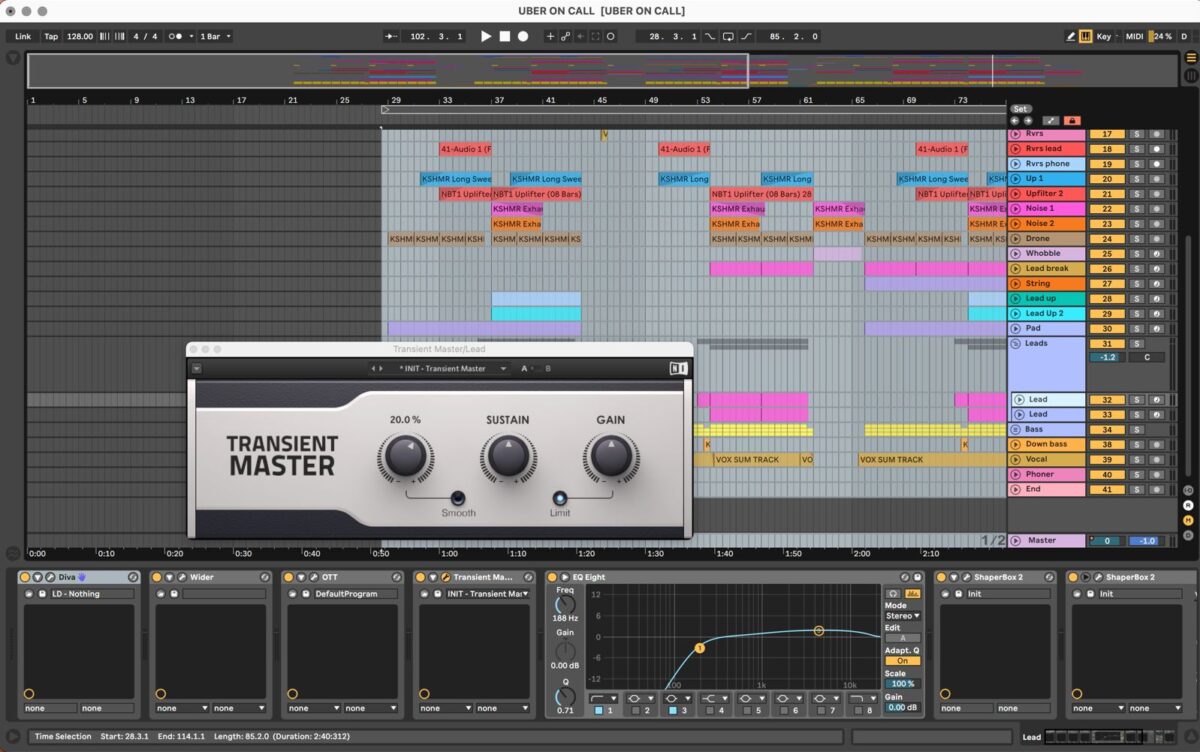
To be honest, a lot of it comes down to trial and error, but I’d say it’s more about feel. It’s about testing different things and trusting your ear.
Today, I feel like we’re going back to more dynamic mixes.
Sure, there’s still this focus on achieving the highest loudness, but it’s a bit less than before in dance music. We’re returning to something with more depth. I use the Transient Master a lot for this, most of the time. For example, when I’m working on the sound of a synthesizer playing a melody or a chord progression, I add some attack with the Transient Master to make it stand out in my mix.
Do you use reference tracks to check the contrast in your own mixing, especially with something as tricky as transients in a track?
Yes, I compare a lot to tracks I like when I produce, especially to see if I like the same dynamic in my elements, like drums or synths. So, it definitely involves transient design.
It’s especially important for the tracks I play live. The elements need to be clear, precise, and sharp. It’s not just about having big basses, although that’s important, but the “shiny” sounds are really important as well.
Is your use of contrast more technical or intuitive at this point when dialing in the transients of a mixdown?

Honestly, it’s more intuitive now. I adjust the transients by ear. I don’t think it’s something that can be measured exactly. It’s more about how it feels and how it sounds when I play the music live.
For example, I work a lot with samples for the kick drums, but they’re never exactly how I want them, or at least, they don’t always fit perfectly in my mix. When there’s too much body or too much low-end in the kick, I tweak the sustain on the Transient Master to take some of it out. When it lacks attack (which happens often), I add some with the attack control.
In Uber On Call, which specific element did Transient Master have the biggest effect on?
The drums and synths! For example, in the second part of the drop, I was looking for something sharp, a bit of aggressiveness in the synths.
And if you listened to the drums without the Transient Master, you’d be quite surprised. I’ve used it everywhere. It definitely adds punch and shine. In the end, I use it even more than an EQ. It’s totally different. We’re modifying the sound wave in real-time.
How does Transient Master compare to doing the same thing with volume automation or EQ?

For me, it’s not really either of those. I’d compare it more to compression. As I said on my kick, I often use it to boost the attack if it’s lacking or cut down on the sustain if it’s too boomy. It’s very effective, kind of like compression.
If I add highs or mids with an EQ on a lead synth, it will only add those specific frequencies. With the Transient Master, that’s not what we’re aiming for. We’re bringing out the lead and the notes it plays by adding attack.
We could maybe do it with volume automations, but then that would definitely complicate things.
Do you find yourself reaching for Transient Master early in the process or toward the final mixdown?
I use Transient Master straight away in my production session whenever I feel it’s needed. I like to progress with elements that already sound good, so I can get a sense of the track’s power early on.
Especially since I test my tracks live quite early, sometimes I only have one drop, and I still test the track live. My mix needs to be solid for that. Plus, it’s always more enjoyable to continue a production with something that already sounds good, rather than having to redo everything at the end.
Finally, what’s the most impactful piece of production advice you’ve ever received from a mentor or just learned on your own?
If I had some advice to give, it would be to focus on dynamics in the tracks you produce. It’s not just about making the track as loud as possible. Some elements need to stand out, and Transient Master is perfect for that, no matter the style of music. It adds depth where it’s needed.
From experience, an idea is never great right from the start. You have to work on the idea, choose the right sounds, mix the track well, and put the effort in. Sometimes I come up with an idea that seems good, then I put it in the track, and it sounds bad. But as soon as I spend time on it, work on the sound, everything starts to take shape, and the idea becomes good. All that to say, an idea is rarely bad if it’s intuitive. You just have to work on it as much as possible.
This inevitably brings me to the topic of not giving up on a track too early. There have been many times when I left a track resting on my computer only to come back to it months later. It wasn’t necessarily a bad track – maybe it just wasn’t the right time to work on it, or I didn’t have a clear vision at that moment. It was about taking a step back and reworking it! Sometimes it’s hard to translate what we have in our heads into the software.
We’re not robots. It takes work, time, and perspective.
The simplest melodies are the strongest. Easy to say, but it’s true. And curiously, it’s the hardest thing to do. Because a simple melody needs extremely strong sound design to stand out. But once that’s figured out, it’s a win.
My last piece of advice is to have fun and not overthink it. Music is a feeling, an art, and it should be intuitive. Today, we’re inevitably pushed to think about marketing in music creation, and we tend to put that instinct aside, but people can feel it. That’s the essence of music. A simple idea, no matter how basic, but made with heart, can touch people.
Wrapping It All Up

Boris Way’s approach is all about subtle moves that stack up. Tools like Transient Master allow him to maintain that balance between weight and detail, between club pressure and melodic release. With Uber On Call, he’s pushing his sound forward while keeping things personal, focused, and dialed in. The kind of track that hits hard without overreaching.
Keep an eye out for what’s next from Boris because he’s definitely entering a new phase, and the mixdowns are only getting sharper.
